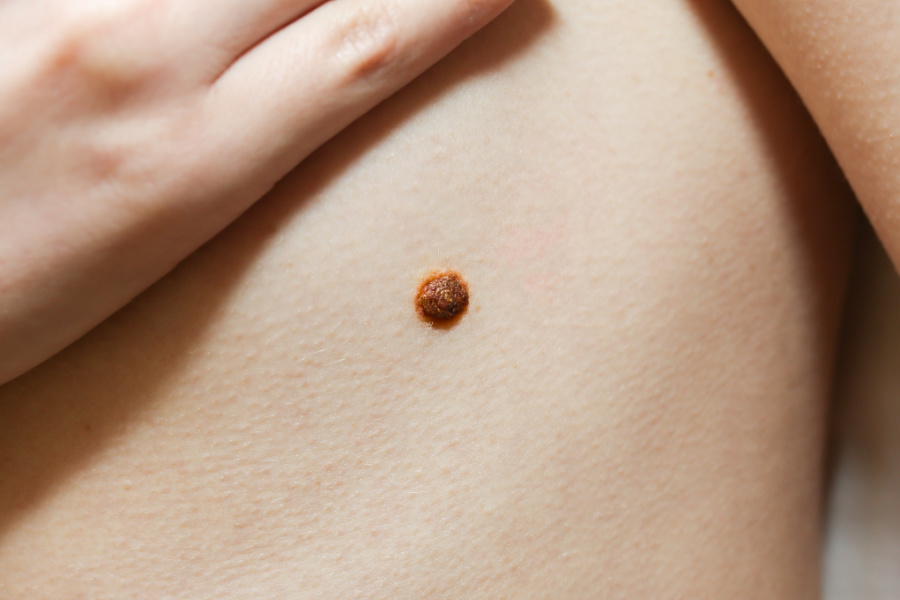
Mole removal is a straightforward procedure that eliminates unwanted moles or skin lesions for either medical or cosmetic reasons. Depending on the mole’s size, type, and location, methods can include surgical excision, laser removal, or shave excision.
While most moles are completely harmless, they can sometimes become bothersome, change in shape or colour, or raise concerns about skin health. This leads many people to consider having them removed.
In this article, we’ll cover when the NHS will carry out mole removal, what the procedure typically involves, and why some individuals choose to go down the private route for faster, more flexible treatment.

The NHS typically only offers mole removal if there’s a clear medical reason. Cosmetic mole removal is not funded, as NHS resources are focused on medically necessary treatments. You may be eligible for mole removal through the NHS if:
It’s worth noting that mole removal purely for cosmetic purposes is not available on the NHS.
To begin the process, you’ll need to book an appointment with your GP. They’ll examine the mole and decide whether it meets the medical requirements for NHS removal. If there are any concerns about potential skin cancer, you’ll likely be referred to a dermatologist or specialist for further assessment.
If the mole appears harmless and isn’t causing medical issues, it may not qualify for removal on the NHS. In that case, your GP might suggest keeping an eye on it or exploring private mole removal if your reasons are cosmetic.
While the NHS is well-equipped to handle mole removal for medical reasons, access can be limited when it comes to cosmetic concerns or non-urgent cases. As a result, many people choose to go private for benefits such as:

Most moles are harmless, but you should seek medical advice immediately if you notice:
The ABCDE rule is a helpful guide:
If you’re concerned about a mole, a GP or dermatologist can assess it and advise whether removal or further investigation is necessary.
Private mole removal in the UK can range from £150 to £3,000, depending on factors like:
On average, you can expect to pay around £500 to £1,000 per mole, with discounts often available for multiple removals in one session.
At the Minor Surgery Clinic, we offer safe, effective mole removal carried out by experienced medical professionals. Whether your mole is causing discomfort, cosmetic concerns, or simply peace-of-mind worries, we provide prompt treatment in a calm, clinical setting.
Our mole removal procedures are performed as a one-stop service, with the consultation and surgery completed in a single appointment wherever possible. We use a precise shave removal technique to minimise scarring and ensure the best possible aesthetic outcome.
Mole removal pricing depends on the size and location of the lesion. Our all-inclusive package starts from £295 for small-sized moles, covering both the initial consultation and minor surgical procedure. There are no hidden costs—just straightforward, professional care from start to finish.
If you’re thinking about having a mole removed, especially one that’s changing in size, shape, or colour, it’s important to have it reviewed by a medical professional. While the NHS may provide removal for medically necessary cases, private mole removal offers faster access, greater convenience, and cosmetic-focused care.
At the Minor Surgery Clinic, we’re here to provide timely reassurance and high-quality results. Book your consultation today and take the first step toward clarity and confidence.